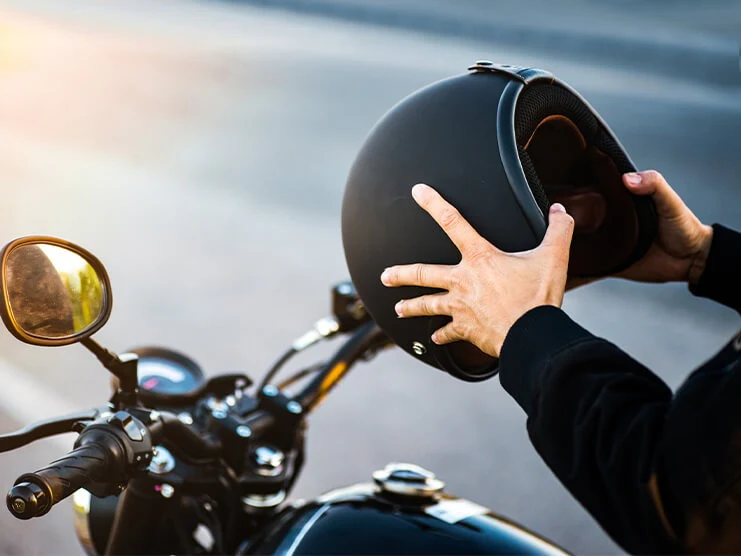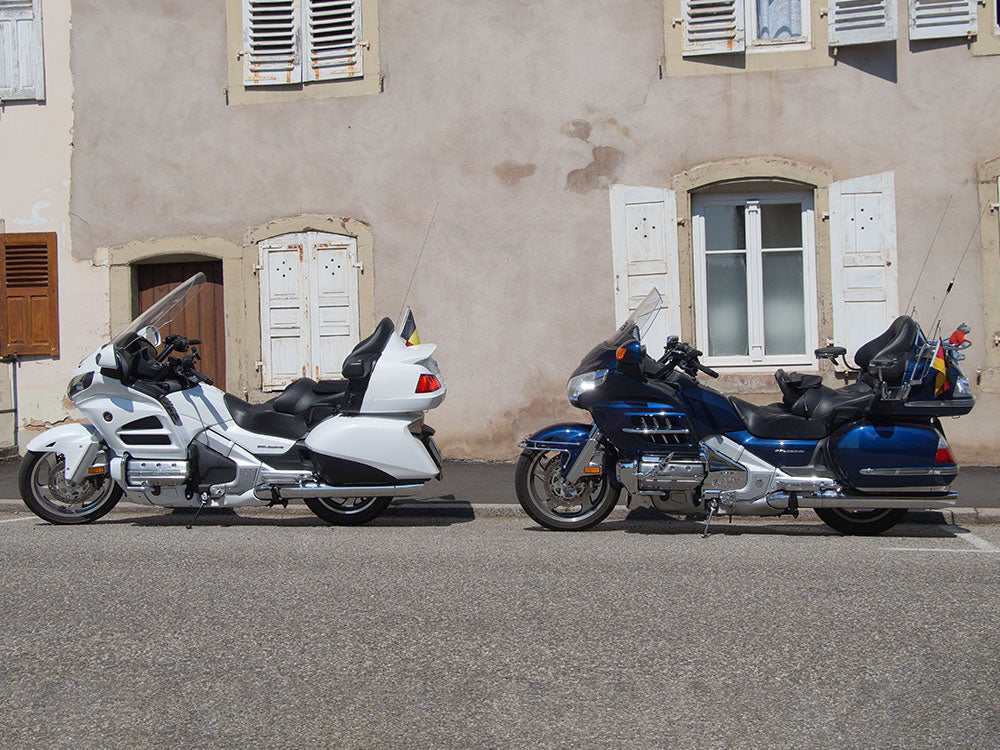Table of Content
1. Introduction
No doubt there are many experienced riders in the world, but accidents can still happen to anyone. Every day, many riders get into accidents, regardless of how much experience they have. One bad accident can be all it takes to ruin a rider’s joy of riding. Sometimes post-traumatic stress is more damaging than the physical damage you suffer following an accident. Post-traumatic stress can instill fear and guilt in the rider, making them unable to ride again. An accident can cause riders to lose confidence and their desire to ride again.
For different riders, post-traumatic stress can have different effects. Some people deal with stress quickly and manage to start riding again, while others cannot find the strength to overcome their trauma.
Riding a motorcycle allows you to experience a sense of freedom that helps you feel closer to nature. For a rider, the relief and joy of riding a motorcycle are the best. No rider should be forced to give up on their passions.
Here are the reasons why motorcycle accidents happen and how to prevent them.
2. Causes & Prevention
2.1 Panic Braking
While riding a motorcycle, lots of accidents happen because riders suddenly panic and apply the brakes suddenly. When riding, a rider may encounter obstacles, whether it be a bump or an animal crossing the way. If a rider suddenly applies the brakes, the motorcycle may slip, causing the vehicle to violently crash.
Prevention
A simple way to minimize risk is by keeping enough distance from any vehicles in front and on either side of you. Secondly, the rider must maintain a speed that allows for easy handling in case of any sudden movements.
2.2 Vehicles Waiting to Turn
Sometimes riders do not pay attention to the vehicles nearby and where they are moving next. Sometimes riders moving at high speed collide with a vehicle about to make a turn, due to either the motorcycle rider or the other driver’s negligence. Either way, the motorcycle rider is the one who will suffer the worst injuries.

Prevention
Always keep an eye on the sides of the road and judge the direction of the other vehicle to stay out of their way. Signal to the other vehicle by turning on and off the motorcycle’s headlight and turn signals, especially when there is a vehicle nearby that wants to change lanes. If you are unsure whether the other drivers can see you, always be prepared to use the brakes.
2.3 Tailgating
The most common reason for motorcycle accidents is that riders tend to be right behind another vehicle while both are traveling at the same speed when the vehicle ahead suddenly brakes without giving the motorcyclist time to get out of the way or brake.

Prevention
Riders should never be right behind another vehicle. Instead, riders should be on the corner side of the vehicle so that the space in front of the rider is clear. This way, if the other driver suddenly brakes, the rider will have time to react.
2.4 Taking Sharp Turns on Gravel or Wet Roads
Many motorcycles slip when making sharp turns, especially if they're the road is slick or littered with debris. If there is gravel or debris on the road, a rider should never speed up because the tires lose traction and can easily slip should the motorcycle speed up or suddenly apply the brakes.
Prevention
Do not ride directly over gravel or wet roads, try to give gravel and slick spots a wide berth if possible. If there is no other way around the gravel, debris, or slick spots, then try to ride as straight as possible without suddenly pulling the throttle, and don’t suddenly apply the brakes.
2.5 Driving Too Fast Around Corners
Another reason motorcycles slip while turning corners is that many riders make the mistake of suddenly speeding up. When making a turn at high speed, traction between the tires and the road decreases. Applying even a little more throttle can cause the tires to slip and the motorcycle to skid on its side, potentially breaking your leg or foot bones.
Prevention
Avoid applying extra throttle while making a sharp turn and do not lean to the side while turning. The more a rider leans, the less traction there will be between the tires and the road. Another way to reduce the risk is by using wide tires that can offer better traction.
2.6 Unable to Control at High Speed
Sports motorcycle riders love to drive fast but many of them lack the experience to control two-wheelers at high speed in most scenarios and can easily lose balance, resulting in the rider falling to the ground. At high speeds, motorcycles also create more vibrations, making it difficult for most riders to maintain control over their vehicles.

Prevention
Only apply enough throttle so that your motorcycle travels at a speed that you can easily handle.
2.7 Incorrectly Using Turning Signals
Many riders do not use turn signals when changing lanes which may cause fatal collisions and some riders forgot to turn off the indicators after turning. This indication misguides the riders that are behind.
Prevention
Always use turn signals when changing lanes or making sharp turns.

3. Tips on Getting Back on a Motorcycle
3.1 Heal and Accept
The first thing to do after an accident is to properly rest and recover. You need to care for both your physical and mental health. Sooner or later, the body will heal, but healing mentally is also very important. After riding motorcycles for a long time, riders become more confident in their abilities. But after a serious accident, they may start to lose confidence. Taking the time to heal can help riders build up their confidence again and encourage them to learn from their mistakes.

3.2 Dealing with PTSD
PTSD stands for post-traumatic stress disorder. Sometimes the brain cannot accept the trauma of a motorcycle-related accident. The brain constantly replays the scenario, torturing riders with thoughts of how the accident could have been avoided, but dwelling on the past does not encourage mental and physical healing. Riders must accept that the accident happened and that it will take time to fully heal. It is healthier for riders to learn from their mistakes and do better.

3.3 Watch Video Footage Carefully (if possible)
If the accident was recorded on a camera, watch the video footage carefully if you can. During the accident, your eyes may have missed details or you may have misremembered what happened. Watch the footage, learn from it and try to be more careful next time.
3.4 Repair the gear/motorcycle
If any of the gear was broken during the crash, try to replace it or claim the insurance on the damaged gear. Repair the motorcycle if possible and conduct a full inspection to determine whether its frame and body are still salvageable. The motorcycle’s frame and body should be in good shape if you wish to continue riding it.

3.5 Take it slow
After your injuries are healed, do not quickly start riding your motorcycle recklessly, intensely, or at high speed. In many accidents, many riders broke their bones or suffered a muscular injury that did not properly heal. Some riders are not able to drive motorcycles in a comfortable riding position or move their bodies like they used to because of the lasting effects of an accident-related injury.
4. Things to Do Before the Next Ride
4.1 Safety Gear
There is nothing more precious than your life. Before riding your motorcycle, make sure to collect your safety gear, including a jacket, pants, helmet, gloves, and shoes. The riding jacket, gloves, and pants should be made of tear-resistant, durable materials.

4.2 Inspect the Accessories and Motorcycle
Even if there is no visible damage on your motorcycle, it is still recommended you conduct a full inspection. After an accident, the motorcycle’s frame may look fine,e but appearances can be deceiving. Many riders make modifications to their motorcycles to enhance their performance, but neglect upgrading the safety features. Make sure that every motorcycle component is functioning correctly, especially the ones essential to your vehicle’s performance.
4.3 Have Confidence in Yourself
A rider cannot ride at his/her best if he/she is not confident in his/her riding skills. The rider must accept that is always a risk and that accidents happen, but life still goes on. Learn from past mistakes and be better prepared so you can avoid accidents in the future.
5. Conclusion
Many experienced riders find themselves in deadly accidents that result in serious physical injuries and mental stress such as feelings of guilt and low self-confidence. They can start riding again, but they first need to properly heal mentally and physically. They also need to acquire safety gear and EXTRA ACCESSORIES that can make their ride more comfortable and safer. These EXTRA ACCESSORIES include SADDLEBAGS, SEATS, TANK BAGS, SISSY BARS, HANDLEBARS, CRASH BARS, etc.













Leave a comment
All comments are moderated before being published.
This site is protected by hCaptcha and the hCaptcha Privacy Policy and Terms of Service apply.